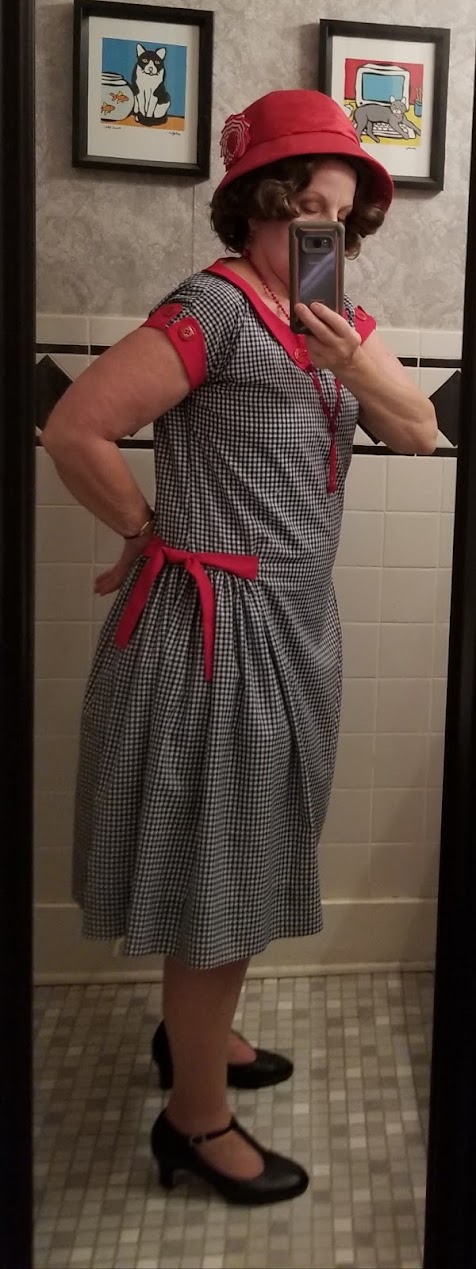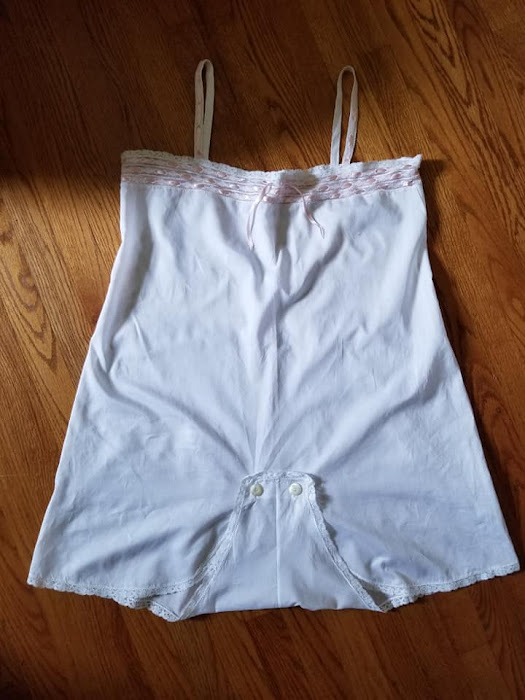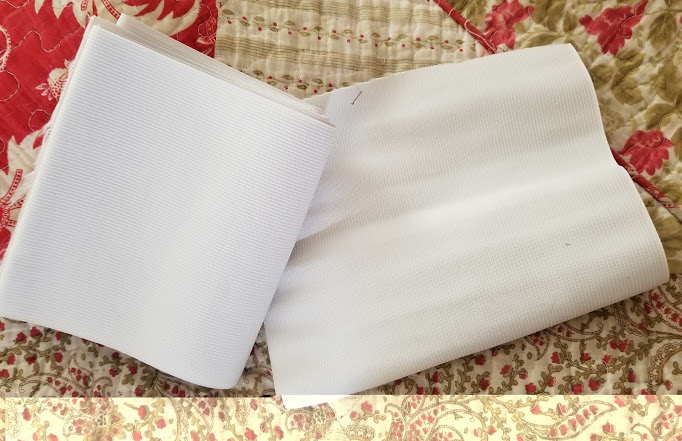One of the most popular styles seen in the 1920s was one known as the One Hour Dress. There were many variations on this simple dress with numerous booklets published by Mary Brooks Picken. This dress is basically cut like a kimono top with no sleeve seam and a side extension at the high hip for pleats/gathers at the sides. Other variations have a full waist seam which allow pleats/gathers all the way around. There are also versions with gores creating a slightly flared skirt. Sleeves may be kept short or sleeve extensions in a variety of styles can be added. There are a number of neckline variations: simple round, collars in various shapes and sizes, V-shaped inserts of contrasting fabric. The list goes on.
Here is a pic of one of the brochures from 1924-25. This one has a full waist seam.
Reprint of a period pattern with a flared insert on the sides. Note the front slot closure and embroidered collar and cuffs.
Diagrams from a French fashion magazine showing the pattern diagram and how contrasting fabrics can be used to create a different style. This one is from the mid 20s.
Reprint from a period sewing book with ideas for adding other details to the simple one hour dress.
Reprint of mid 20s period pattern.
This design doesn't really require a pattern. I followed the diagram on
Festive Attyre's Lawn Party dress post. I enlarged the diagram then took my own measurements to compare. Period sewing guides give detailed instructions on drafting these patterns. Basically I took my bust measurement plus desired amount of ease and my high hip measurement with ease. I also measured the front length from shoulder to where I wanted the skirt to be. You can see my pattern here along with the one I made for my slip.
I needed to make a fitting muslin so I bought some cheap gingham check, figuring I could actually wear it. It's a cotton blend which I'm not overly fond of but I'll make a better version later. I cut the sleeveless dress and stitched it together. Here is my first fitting over modern underpinnings. It fits fine. I'm glad I raised the "waistline" and added a larger side extension for the gathers. No amount of corsetry can make a straight style of dress work on my body.
I had planned to wear this with red accessories so I decided to add a red collar, cuffs and some sort of belt. I used pattern tracing cloth to draft a collar based on one I'd seen with button accents.
I did the same to create cuffs.

The collar and cuffs were interfaced and faced with self fabric. They were attached using bias tape as facing. I had found these buttons at Joanns that resembled some vegetable ivory ones I found in my 1922 catalog.
My original plan was to do some sort of belt with a button closure. After perusing more period images, I decided to go with side ties which I saw on an extant dress. I needed to pull the sides in a couple of inches so this worked well.
Accessories: Red silk Regency bonnet, 1920s vintage glass bead necklace, 1920s gold watch (belonged to David's grandmother), Red paste repro earrings and ring, seamed stockings, 1920s vintage handbag, T-strap shoes (I've preordered 20s red pumps that haven't arrived yet!). I found that my jockey style Regency bonnet had the shape and color that I needed. I'd like to refashion a red straw hat eventually to wear with this.
Here is the dress in action.
I think I need to raise the "waistline" almost to my natural waist. My hips are 6 - 8 inches larger than my bust so it's hard to get the straight silhouette if the straight part of the dress has to go over my hips.
I have mixed feelings about this style. I'm going to play around with my basic pattern a bit more: raise the waistline almost to my natural waist and do a full waist seam to add fullness over my hips. I'll also do a 3/4 length sleeve. Basically, I'll add style details that flatter my shape. I think my next attempt at a 20s dress will be a Robe de Style as I think that will be more flattering. Bottom line--this is probably the worst decade I could choose for my body type but I have no doubt that many women in the 20s struggled with these same issues. I'll find something that works.
































































